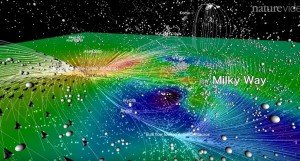THE LARGE UNDERGROUND XENON EXPERIMENT AND DIRECT DETECTION

Supercluster
The Large Underground Xenon (LUX) experiment, which ran for nearly two years and ended in May 2016, was one of the most significant efforts to directly detect dark matter.
Despite the wealth of (gravitational) evidence supporting the existence of non-baryonic dark matter in the Universe,[1] dark matter particles in our galaxy have never been directly detected in an experiment.
Directly detecting a dark matter particle requires it to bump into a nucleus (the core of an atom) of ordinary matter. If this occurs, the nucleus would give off just a little bit of detectable energy. However, the probability of these particles colliding is staggeringly low.
Theories say that 85% of the universe is made up of dark matter. But scientists are having a real hard time trying to find it. So far, not a single experiment has yielded a definitive trace of dark matter.
Although dark matter has not been directly observed, its existence and properties are inferred from its gravitational effects such as the motions of visible matter,[4] gravitational lensing, its influence on the universe’s large-scale structure, on galaxies, and its effects on the cosmic microwave background.
However, if we think of the cosmos as an electric universe with electric fields to counteract and balance the movement of charged particles and matter from electrogravity forces, it suddenly starts to make more sense.
-Nils Rognerud
San Francisco, Sept 13, 2017

Leave a Reply